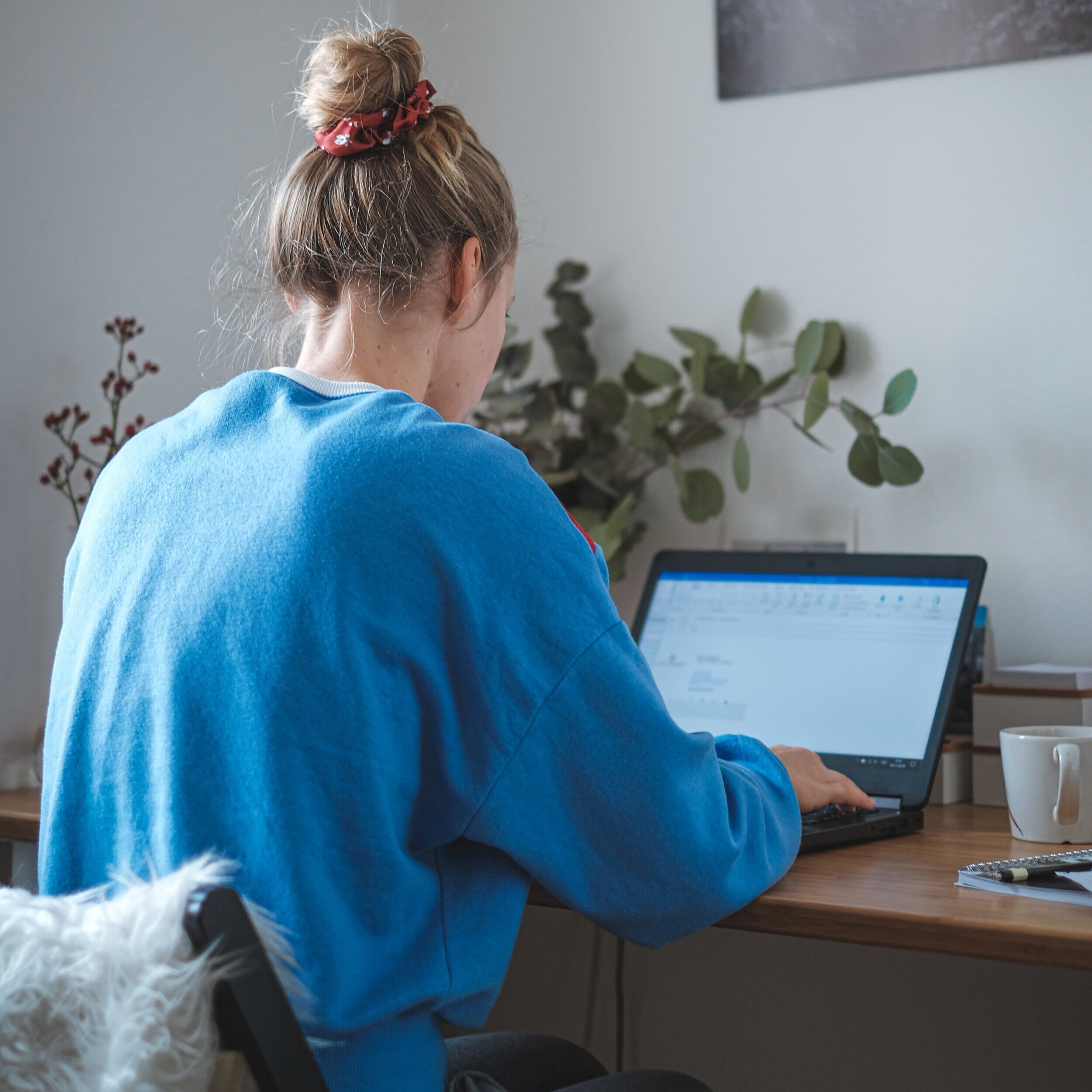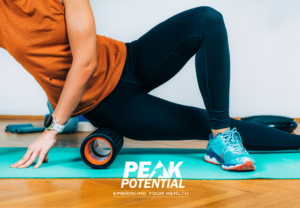
Many people have suddenly found themselves working remotely, doing their part to flatten the curve and reduce the impact of COVID-19 on our healthcare system. This new work environment might seem like a good thing – work in pj pants and lunch on the couch – but it has presented many more challenges than most of us had anticipated.
The reality of working from home brings up issues of childcare, interrupted concentration, the dog that thinks your home to play with him, and our biggest concern for you . . . a make shift work station.
Your desk at the office might be set up with a standing desk, adjustable chair, two large screens, and headset telephone. Unfortunately, most Americans are finding themselves sitting their 8 hours in a hard kitchen chair hunched over a laptop for the foreseeable future.
Most of us just don’t have a good working environment at home. The desk is covered with bills , we’re using the spare dining room chair, or end up on the couch.
Some of these issues are actually unhealthy and really bad for our bodies. Fortunately, there are many things you can do to make your home office healthier and more productive:
-
Consider Standing to Work
Many employers are moving to standing workstations after numerous studies have shown that sitting all day is a leading contributor to early death. Many people even find they can concentrate better while standing. But, how can you mimic this at home?
Set yourself up to do some work at the kitchen counter, or place a smaller table or large box on top of your existing desk to raise your work to standing height. If you aren’t used to standing for extended periods you may want to increase standing time slowly for your body to adjust or you may need orthotics in your shoes to improve your base of support.
-
Clean Off Your Desk
The home office or desk seems to be a storage location for everything that can wait until another day. Bills, junk mail, briefcases, magazines . . . found a pair of gloves and lego men on mine today. This not only makes it hard to find what you’re looking for, but working in all of that clutter is also distracting.
Clearing off your desk – or whatever area you have designated for work – will help you get the physical and mental space you need to be at your best.
-
Check Your Lighting
Lighting in the home is frequently chosen to be attractive rather than functional. Dim lighting can make you feel sluggish and less productive, as well as being a strain to the eyes that can result in headaches.
When working from home you probably need more light. Start by opening all curtains and blinds. Next, repurpose a lamp from another room for your work station.
-
Find a Better Chair
If you aren’t used to working from home, you likely don’t have a high quality office chair. This is a good excuse to do a little more standing, or take calls while walking the neighborhood.
If possible, find a chair in your home that allows you to place your feet flat on the floor, gives you good support across your back, and has a firm sitting surface. Try different options such as a small pillow behind your low back or a small step stool under your feet. Find what helps you sit with the best posture and your back will thank you.
-
Minimize Noise
Sound is important. If you’re not able to minimize the sounds in your home office consider getting some simple earplugs. You may prefer to put on headphones and listen to music or nature sounds while you work. Avoid music with lyrics. Thinking one thing and hearing another isn’t the most effective way to work.
-
Move Often
It’s important not to stay in one position for too long and this is just even more true at home when your environment isn’t set up perfectly for work.
Set an alarm on your phone to get up and move around every hour. This could be for a walk around the house, stroll outside, or my favorite a mini dance party with the kids (anyone doing Go Noodle at home?).
-
Add Some Desk Stretches
Maintain poor postures or just the nature of sitting most of the day causes shortening of muscles that can result in aches and pains.
This week we will be demonstrating some stretches on Facebook that are perfect during desk – or couch – work. Be sure to address the neck, shoulders, back, and hip flexors.
Recent studies have found that working from home can actually be better and more productive than working in the more conventional office setting. Having kids home doing “online learning” was surely not taken into account when they considered productivity though.
So before you jump into your work today, take the time to optimize your work space for both your health and your productivity. You probably already have some good ideas on how you can apply these tips to your home office, but we would love to help you take your health and productivity to the next level..
We are now offering Telehealth visits from our office straight into your home office. You are meeting with your work team, boss, or suppliers virtually, so why not have a virtual session with your physical therapist. There is a lot we can do to help with specific work space set up, as well as individualized stretches and strengthening exercise to be sure you keep your body strong, healthy, and pain free during this time.
You may be very surprised how much a doctor of physical therapy can help you through this challenging time. Click the inquiry link below to a request a call to see if you qualify for Virtual Telehealth Sessions.




